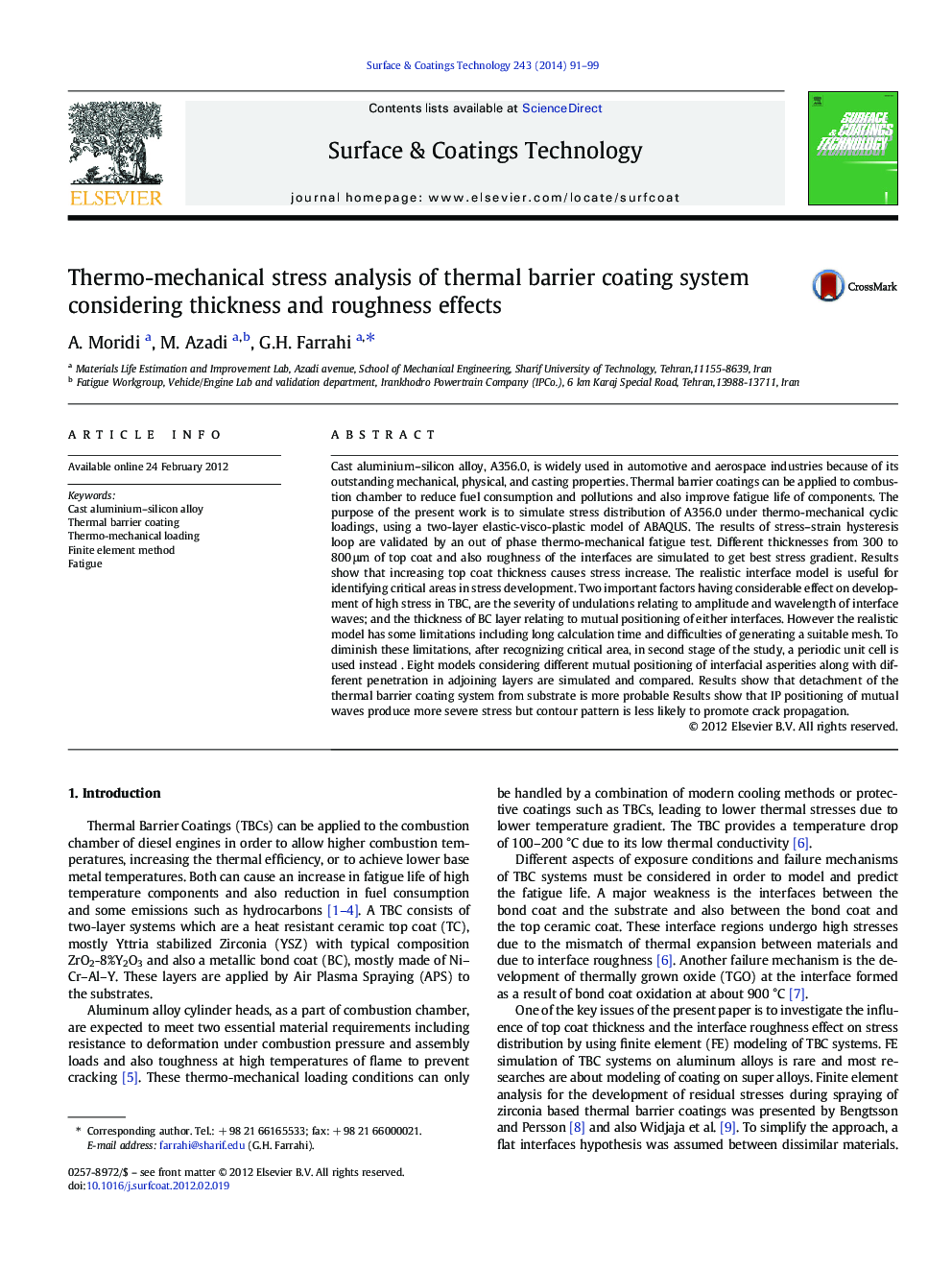| Article ID | Journal | Published Year | Pages | File Type |
|---|---|---|---|---|
| 1657582 | Surface and Coatings Technology | 2014 | 9 Pages |
Cast aluminium–silicon alloy, A356.0, is widely used in automotive and aerospace industries because of its outstanding mechanical, physical, and casting properties. Thermal barrier coatings can be applied to combustion chamber to reduce fuel consumption and pollutions and also improve fatigue life of components. The purpose of the present work is to simulate stress distribution of A356.0 under thermo-mechanical cyclic loadings, using a two-layer elastic-visco-plastic model of ABAQUS. The results of stress–strain hysteresis loop are validated by an out of phase thermo-mechanical fatigue test. Different thicknesses from 300 to 800 μm of top coat and also roughness of the interfaces are simulated to get best stress gradient. Results show that increasing top coat thickness causes stress increase. The realistic interface model is useful for identifying critical areas in stress development. Two important factors having considerable effect on development of high stress in TBC, are the severity of undulations relating to amplitude and wavelength of interface waves; and the thickness of BC layer relating to mutual positioning of either interfaces. However the realistic model has some limitations including long calculation time and difficulties of generating a suitable mesh. To diminish these limitations, after recognizing critical area, in second stage of the study, a periodic unit cell is used instead . Eight models considering different mutual positioning of interfacial asperities along with different penetration in adjoining layers are simulated and compared. Results show that detachment of the thermal barrier coating system from substrate is more probable Results show that IP positioning of mutual waves produce more severe stress but contour pattern is less likely to promote crack propagation.
► Stress distribution is studied in coated A356.0 under thermo-mechanical loadings. ► Realistic interface roughness shows the critical area of tensile stress. ► Increasing TC thickness increases the stress. ► OP positioning of interface waves shows better condition for crack growth.
